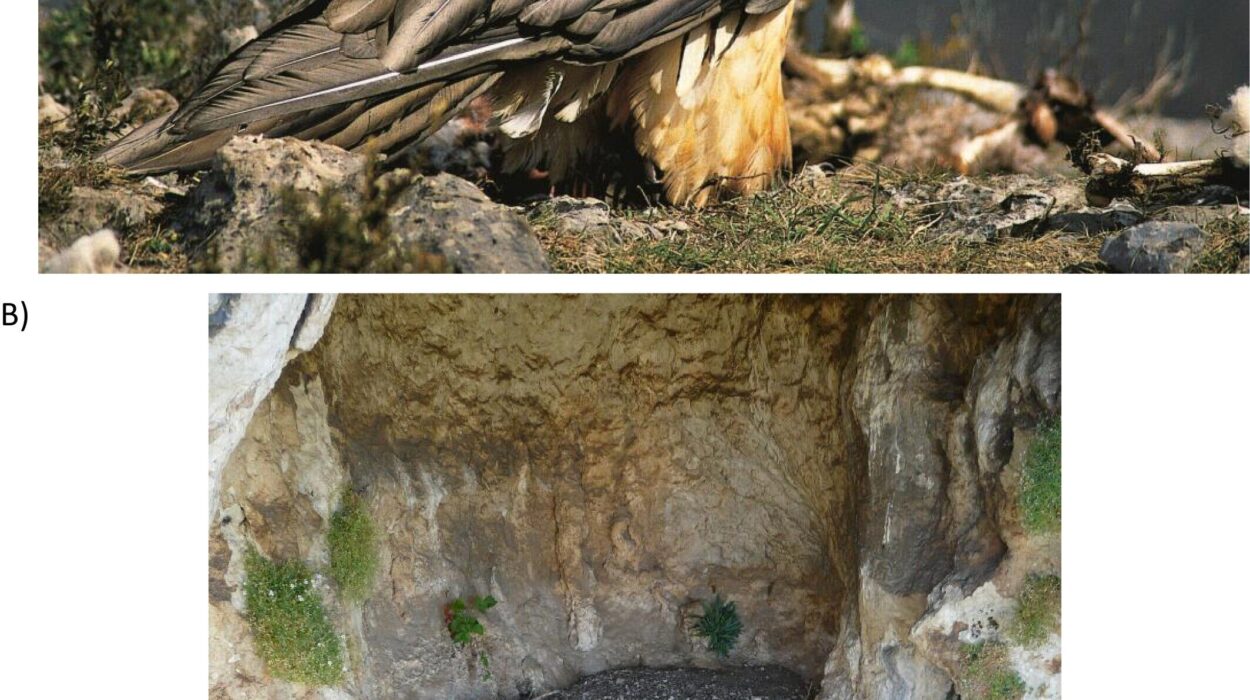A team of animal behaviorists from the Leibniz-Institute for Evolution and Biodiversity Science, the Museum für Naturkunde, and Wageningen University and Research recently published an intriguing study in the Proceedings of the Royal Society B, shedding new light on the social behavior and vocalizations of Pallas’ long-tongued bats. Their findings indicate a clear association between the types of vocalizations bats produce and their behavioral characteristics, suggesting that these vocalizations may reflect underlying personality traits among the species.
Background: Bats and Vocalization
Bats are known for their vocal behavior, but the specific roles of their vocalizations in social interactions have been less understood until recently. Previous studies have shown that bats vocalize in different contexts, including communication with other bats and navigation through echolocation. While echolocation is well-studied and understood as a way bats navigate and locate food, the role of other vocalizations—those used for communication—is still an emerging area of research.
Additionally, bats exhibit social behaviors such as coordinated movements and group activities, with some species showing complex social structures. However, much of the research on bat vocalizations has focused on isolated instances of communication or the use of sounds for navigation. The study by the team of animal behaviorists takes a closer look at how different types of vocalizations might correlate with individual behaviors, potentially indicating personality differences within the species.
The Study: Pallas’ Long-Tongued Bats in Costa Rica
In their study, the research team focused on Pallas’ long-tongued bats (Glossophaga soricina), a species found in caves in Costa Rica. They chose to examine the vocal and behavioral responses of 60 male bats, which were captured from their natural cave environment and brought into a controlled lab setting. This controlled environment allowed the researchers to observe how the bats reacted to various novel stimuli while simultaneously recording their vocalizations.
The experiments were designed to simulate unfamiliar situations that might trigger social or exploratory behavior in the bats. The bats were exposed to new environments, a rubber ball placed in their enclosure, and food placed near a lantern. These experimental conditions were chosen to provoke responses related to curiosity, exploration, and possibly even social interactions, with each bat’s physical and vocal behaviors recorded during these trials.
Findings: Boldness, Curiosity, and Vocalization
The study revealed a fascinating pattern in the behavior of the bats. Researchers discovered that the bats who exhibited more boldness in their reactions to the novel stimuli were also the ones who vocalized more frequently. These vocalizations were not just random; they seemed tied to the individual bat’s response to the stimulus. For example, bats that were more curious about the rubber ball or other new objects tended to produce more vocalizations than those who showed less interest. This finding suggests that vocalizations may serve as a tool for communicating curiosity or excitement.
Moreover, the more socially alert bats—those who responded to perceived threats or potential dangers by vocalizing alerts—also showed a higher frequency of vocalizations. This behavior indicates that vocalization may not only be a form of communication with other bats but could also function in alerting others to potential risks or novel environmental changes.
Interestingly, the researchers also noted that the bats who vocalized most were often the most nervous or anxious, displaying more physical movement such as flying longer distances and moving around more frequently during the trials. This suggests that nervousness or heightened alertness may be linked to an increased need to vocalize, possibly as a way to signal distress or uncertainty in the face of unfamiliar stimuli.
Personality Differences and Social Hierarchy
The results of the study led the research team to propose that these variations in vocalization frequency and type could be indicative of personality differences among individual bats. Just as in humans and other animals, it appears that Pallas’ long-tongued bats exhibit unique behavioral traits that can influence how they interact with their environment and fellow bats. For example, bold bats may be more exploratory and socially active, while more anxious individuals may respond with higher vocalizations and alert behaviors.
The research team also speculated that these differences in behavior and vocalization could have an impact on the social hierarchy of bat colonies. While the researchers did not find direct evidence of a strict social hierarchy in their study, they acknowledged that vocalizations might play a role in establishing dominance and status within bat groups. This hypothesis is supported by previous studies suggesting that bats sometimes eavesdrop on each other’s echolocation calls, which could provide clues about the ability of a bat to locate food and navigate effectively—traits that could influence the social standing of individuals within a colony.
Although no concrete evidence of a clear hierarchy emerged in this particular study, the team pointed to other studies in bat behavior that suggest subtle forms of social ranking might be established through vocalizations and other behaviors. The eavesdropping behavior described in previous research implies that bats may be able to assess each other’s capabilities, such as hunting efficiency, by listening to the echolocation calls of others.
Implications and Future Research
The findings of this study have important implications for our understanding of bat behavior and the role of vocalizations in social interactions. The idea that vocalizations are linked to personality traits and social behavior opens up new avenues of research in animal communication. Researchers can now explore how these vocal differences may affect how bats organize themselves in the wild, how they cooperate during foraging, or how they establish social bonds within their colonies.
The study also paves the way for further investigations into the neurobiology of animal behavior. Understanding how different personalities develop in bats—and how these personality traits are expressed through vocalization—could help researchers learn more about the brain mechanisms that govern animal behavior. By exploring the relationship between the nervous system, behavior, and vocal communication, scientists may uncover broader principles that apply across different species, potentially leading to a better understanding of the evolution of communication in mammals.
Conclusion
The research conducted by the team from the Leibniz-Institute for Evolution and Biodiversity Science, Museum für Naturkunde, and Wageningen University and Research offers an exciting glimpse into the social dynamics of Pallas’ long-tongued bats. By examining how these bats vocalize in response to novel stimuli, the study sheds light on the possible role of personality differences in shaping animal behavior. Vocalizations, it seems, are not merely random or incidental; they serve as an important tool for communication, alerting, and possibly even social signaling. As researchers continue to explore the connection between vocalizations and behavior in bats, it will be fascinating to see how these findings contribute to our broader understanding of social structures, animal communication, and the diversity of personality traits across species.
Reference: Theresa Schabacker et al, Social vocalisations indicate behavioural type in Glossophagine bats, Proceedings of the Royal Society B: Biological Sciences (2025). DOI: 10.1098/rspb.2024.2217






